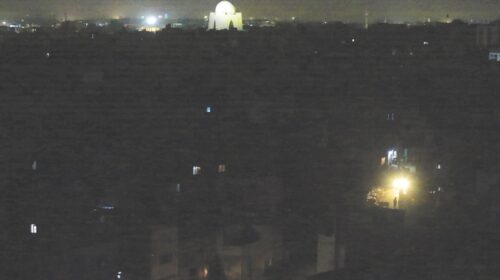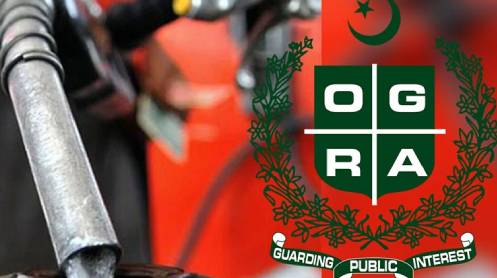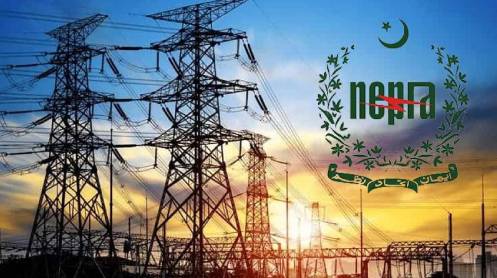A major power breakdown caused by what was described as an “accidental fault” on Thursday morning piled miseries on people across the city, as well as other parts of southern Sindh, on Thursday. Normal supply could not be restored till late in the evening.
Almost the entire city remained without electricity for hours, causing a great deal of inconvenience and hardship to people, particularly patients at hospitals and litigants at courts. Besides, the breakdown also caused heavy losses to the industrial and commercial sectors.
Almost 80 per cent of the city remained without power in the afternoon and the electricity was not restored till late in the evening to a number of areas including Malir, Landhi, Korangi, Shah Faisal Colony, Gulistan-i-Jauhar, Gulshan-i-Iqbal, Federal B. Area, Liaquatabad, Nazimabad, North Nazimabad, Surjani Town, North Karachi, New Karachi, Saddar, Lyari, Defence and Clifton.
A spokesman for the K-Electric said that phase-wise power restoration was under way in the city.
KE says crisis to persist over the next 48 hours
He said that many cities across the country were currently affected following a fault in the national transmission network, adding that strategic installations, including the airport, hospitals and KW&SB pumping stations had been energised.
“Restoration of residential areas is progressing gradually,” he said. According to him, parts of F.B. Area, Gizri, Clifton, Defence and Elander Road as well as large parts of Gulistan-i-Jauhar, Liaquatabad, Lyari, Malir and other areas had been energised.
The spokesman said that the power utility’s generation, transmission and distribution network was safe and fully functional, enabling restoration efforts to progress steadily.
A statement issued by the KE late evening, said that the power crisis would persist for the next 48 hours.
“While KE systems remain stable, supply from the National Grid is partially affected due to ongoing technical constraints at their end,” it said, adding that this situation might persist over the next 48 hours.
“To manage the constraints, KE may temporarily curtail power supply to industrial zones during nighttime hours to facilitate residential areas. Should the situation persist or intensify, the company may also have to conduct loadshedding,” it said.
Losses to industry
Federation of Pakistan Chambers of Commerce and Industry (FPCCI) chairman Irfan Iqbal Sheikh, speaking to Dawn, put the estimated losses at Rs8 to 10 billion, pointing out that the city is the country’s hub of industrial and commercial activities.
Water shortage
The power breakdown also led to a severe shortage of water in the city, adding to the miseries of people as they were unable to get water through power motors and suction pumps at their residences.
“We have no water today as it could not be pumped from the underground water tank to the overhead tank in the absence of electricity,” said a resident of an apartment in Saddar.
In every part of the city, people get water from the supply lines of the Karachi Water & Sewerage Board using suction pumps due to low pressure in the lines. Since there was no electricity during the hours when water is supplied to different localities, people remained without the commodity for the whole day.
Besides, an 84-inch main pipe line between city and Dhabeji also burst due to power breakdown, leading to a short supply of 65MGD.
KW&SB Chief Operating Officer Syed Salahuddin Ahmed told Dawn that the damaged pipeline was being repaired and water supply would be completely restored by Friday morning.
Sources said the power breakdown also disrupted health services, especially at hospitals and clinics lacking proper electricity backup systems.
One of the worst-affected public sector tertiary care hospitals, they said, was Abbasi Shaheed Hospital, where elective surgeries had to be postponed and diagnostic equipment couldn’t be operated.
At Dr Ruth Pfau Civil Hospital Karachi, several wards remained without electricity for long hours, adding to inconvenience to patients and their attendants in hot weather. Moreover, sources said, there was a disruption in electricity supply for at least 25 minutes at the hospital’s Operation Theatre Complex at around 9am.
“Patients, however, weren’t affected as no surgery was under way at that time. The backup system was soon connected, helping the staff to carry out the necessary surgical procedures,” a CHK doctor shared, adding that the power breakdown delayed diagnostic procedures.
Healthcare providers at Jinnah Postgraduate Medical Centre, National Institute of Health, Dow University of Health Sciences and the Sindh Government Infectious Disease Hospital and Research Centre claimed their facilities were fully equipped with power backup systems and carried out routine procedures without any hindrance.
“There was no disruption in services as the hospital can generate 6MW electricity with the help of 15 generator sets along with two solar panels,” said Dr Yahya Tunio, JPMC executive deputy director, also looking after the hospital’s repair and maintenance services.
The breakdown deprived two regions of Sindh — Hyderabad Electric Supply Company and Sukkur Electric Power Company — of power supply since morning, our staff correspondent at Hyderabad adds.
Officials of the power utilities were struggling to restore electricity supply to the vast regions connected with their system.
Hesco spokesman Sadiq Kubar said that 40pc supply had been restored to grid stations, 60pc were energized by 6pm and 100pc grids had normal supply by 7.45pm.
He said that only nine feeders were having trouble and would be energized by night. Hesco has 79 grid stations of 132kv.
Quoting Regional Control Centre (RCC) Jamshoro, he said that dip in the power supply was reported at around 9.32 am which had left the entire system without power supply.
He said that according to RCC low frequency was attributed to dip in the system which affected power supply right up to Guddu power plant.
According to some officials working with the federal energy ministry, initially the fault was reported in 500kv circuit at 8.48am in Hub area involving conductors of K-II and K-III of Jamshoro and K-2 and K-3 of NKI.
They informed that 1320MW Hub CPHGC plant supplied power to Jamshoro grid station where an approved shut down was under way there this morning.
The power supply from Hub plant was also linked with NKI K-II and K-III, which developed a fault and conductors broke at location No26, 26-A and 27 near Hub city at 9.16am as their circuits were old.
They said this started affecting the rest of the system subsequently and most parts of power utilities of Sukkur, Hyderabad, Quetta and Multan remained without electricity supply since morning. They said that rehabilitation work was under way on conductors and it would be normalized by tonight.





